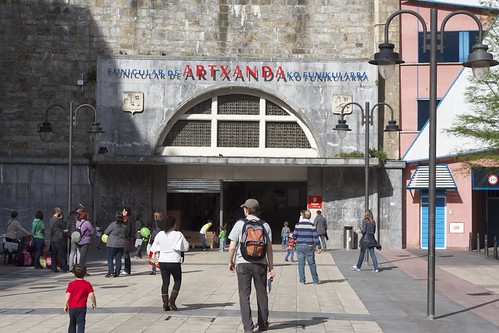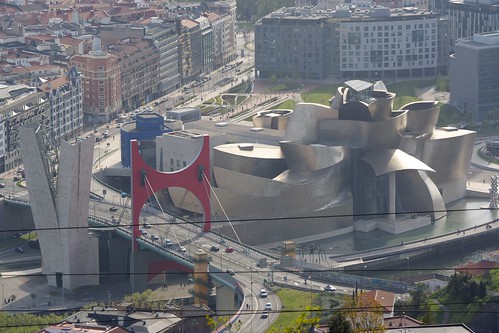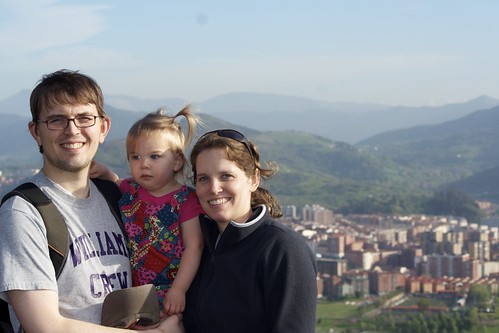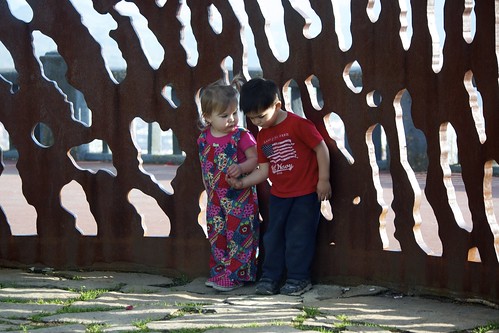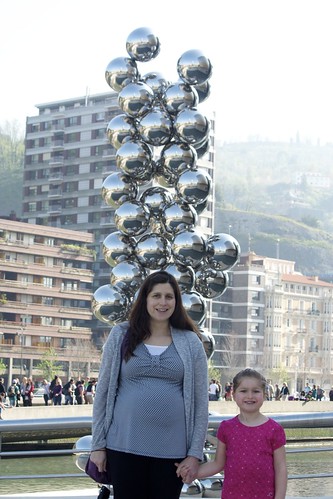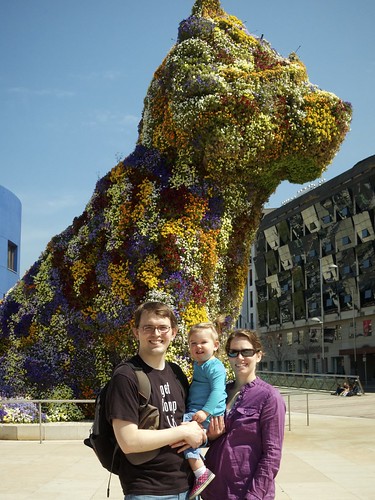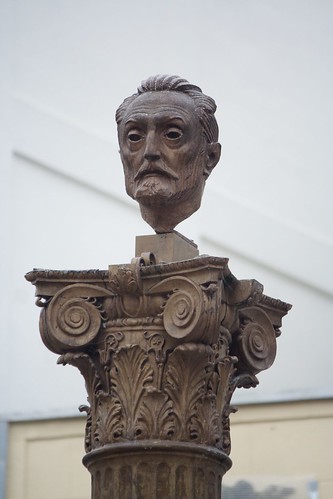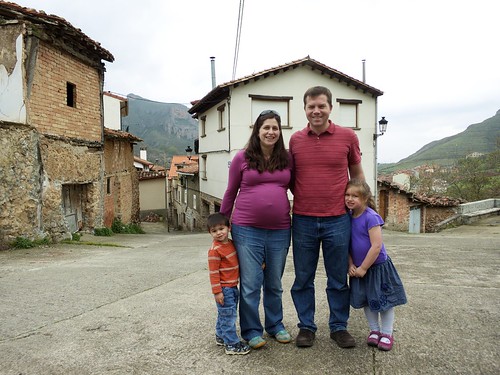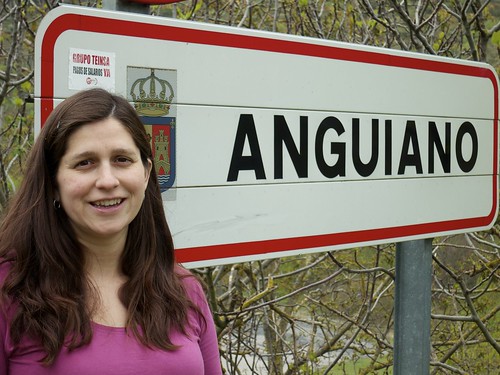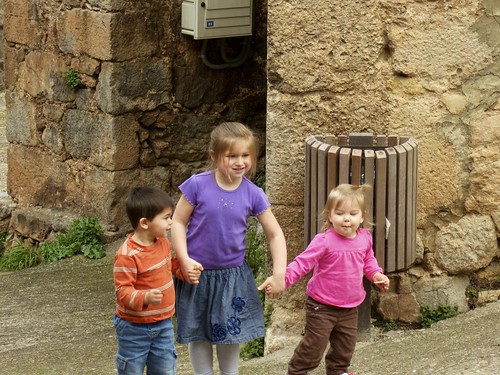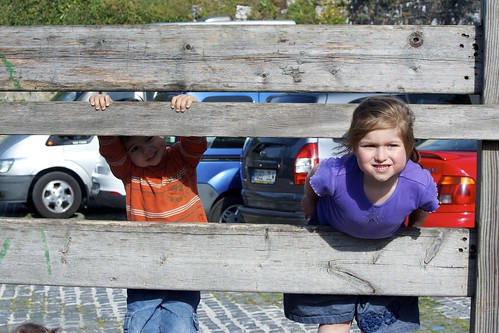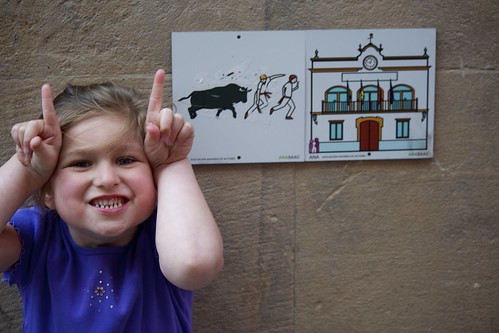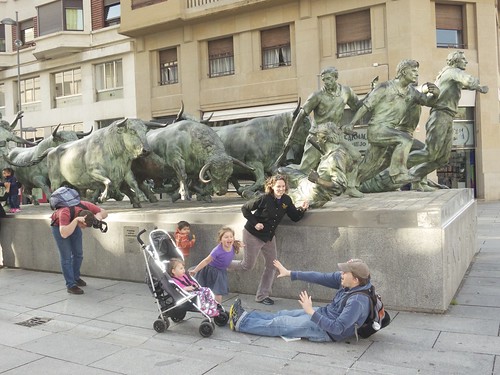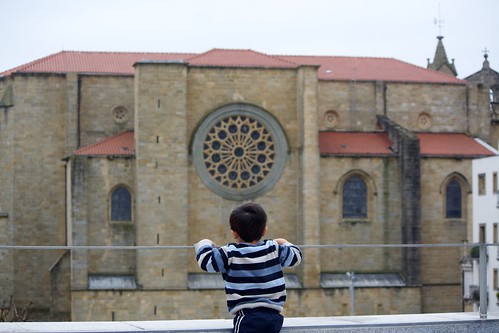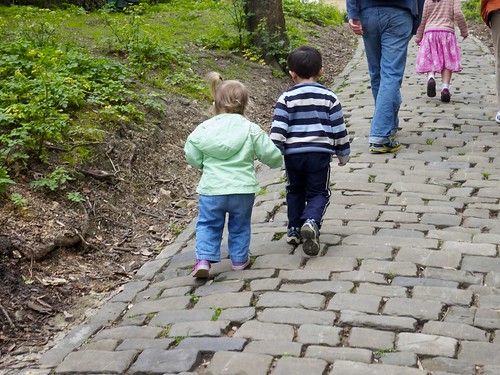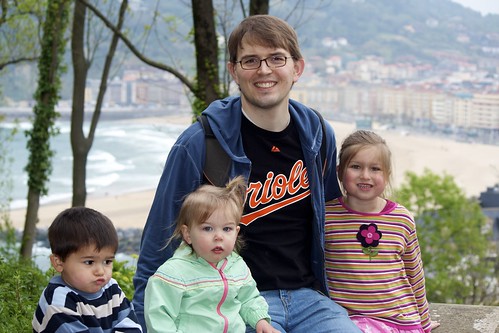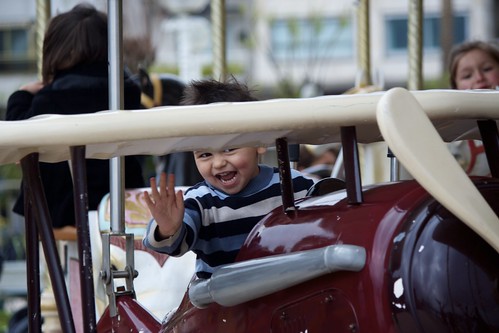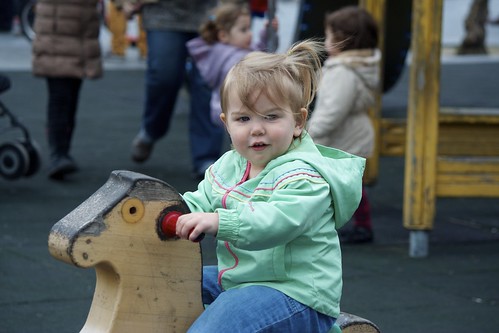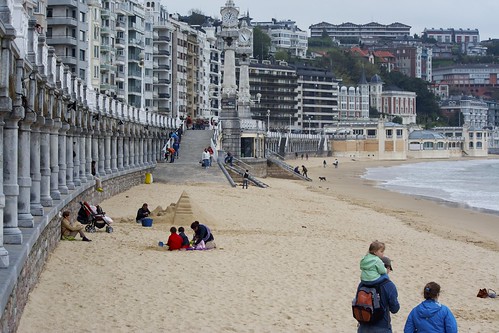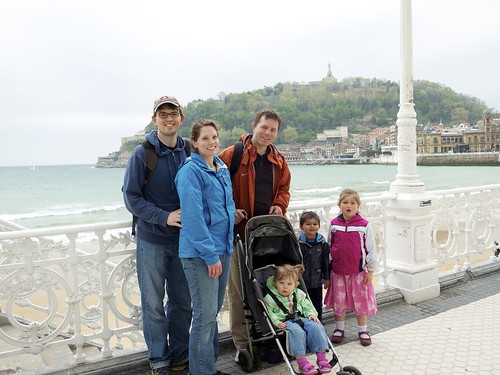The Number Field

The Memory Cottage by Mark, March 23, 2025
The Memory Palace is a podcast/radio segment that tells stories from the past about people, places, things and events that have been forgotten and deserve to be remembered more broadly in our society and culture. The idea of the memory cottage is somewhat more modest; also to preserve that which is in danger of being forgotten, but is only relevant to only a small group of people–me, my family, and maybe a few friends.
The name of the podcast is a reference to a memory enhancement technique, also known as the Method of Loci, which uses the technique of creating links between the familiar and unfamiliar to aid in recalling the latter. My mother, a psychology professor, described it as trying to remember your grocery list by imagining walking from room to room in your house, placing each item on the list in a memorable place as you go along. When you need to recall the list, walk through the imagined house again and pick up the things that you left there. At the edges of my memory, I think there was a funny bit of apocrypha about a person famed for using this technique who forgot something one time, and blamed the failure on having recently rearranged the furniture in his real house. In a way, my hope is that this process can work in reverse; there are things all around that can remind us of the unfamiliar objects that once were once placed in the memory palace, and hopefully can cause that which was once familiar but is now less so to resurface, as Proust’s Madeleine did.
Finding Order by Mark, January 21, 2016
A few days ago at bathtime, Kate came up to me and demanded that I take off her trousers and tights, which I did. I was about to take off her onesie too, but she grabbed the clothes I had just removed and ran into the other room. It took me a second to realize what she was doing, but her direction made it clear that she was going to put her clothes into the dirty laundry hampers. Once she had done that, she came right back and asked me to take off her onesie, which she also delivered to the hamper right away. Even though she still doesn’t talk much, Kate definitely has strong ideas about the structure of her world.
I’ve been sick for the past few days. Yesterday, I got Kate up from her afternoon nap while Jenny was out picking up Elena and Roman from school. While waiting for them, we found ourselves playing an impromptu game. Kate positioned herself atop a blanket that was folded on the floor next to the bed, and I counted “one-two-three-BOOM!”, after which she dropped herself down to a seated position. After we did this several times, she took it one step further by lying all the way down on her back. Then she added another twist to the game, going down before I had the chance to get to “three.”
It reminded me of how early we develop a sense for narrative structure and need for dramatic tension—an initial idea is followed by rising action and excitement, with each new variation on the theme seeming like an awesome improvement, then inevitably starts to lose its novelty despite attempts to introduce fresh wrinkles. As fun as moments like Kate’s spontaneous game with me are, the flip side of the coin is the common lament of parents everywhere that kids only play with new toys for five minutes before going back to complaining about being bored. But it’s just the same for adults: I get excited about new ideas all the time, but often lose interest before even starting to work on them, and that’s why I don’t podcast. There are one or two ideas that won’t let me go even though I haven’t put in the effort that they deserve. That probably means something.
Athens by Mark, January 17, 2016
The first half of this post was included in Roman’s Learning Journey, but the second half is original content.
During the Christmas Holiday, we went in search of the sun: we visited Athens, Greece. On the way there, we had a stopover at Heathrow airport, where we ran into Santa and one of his elves. Santa wanted to know where all the children were going, and where he should deliver their presents. He also gave us chocolates!
Athens was nice and sunny when we visited, which was not guaranteed to happen; at least one of the locals we talked to said “this is not Christmas!” It wasn’t exactly hot—all of the locals were were wearing heavy coats, scarves, and hats—but it was much warmer than home, so we all wore short sleeves. We visited the Acropolis and walked around the Parthenon, which was built by the ancient Greeks. I told Roman and Elena as much as I could remember about the Ancient Greeks, especially about all the gods and goddesses they believed in, such as Athena, Apollo, and Zeus. The stories about the gods and goddesses and their adventures are called myths, and I went through a period in my childhood when I really loved learning about them; I tried to recall some of the stories to tell the kids. As happens on most of our trips, we did a lot of walking around, so there was lots of time for talking. In addition to seeing lots of other ancient ruins, we did some shopping and ate lots of lovely Greek food. One evening we watched part of a free Christmas concert in the big public square.
Throughout all of it, Roman’s really wanted just one thing: to visit a playground. I did some research on the internet and found one, but imagine Roman’s disappointment when we got there and the gate was locked shut. The kids wanted to believe that it would be open later that day, but I could tell that it had been shut for a while. I blamed the debt crisis. We fortuitously overcame that disappointment at our next stop, the Panathenaic Stadium. The steep stands are made of marble, and we climbed all the way to the top. Even better, Roman and Elena got to run on the same track as ancient athletes and modern Olympians from 1896 and 2004 much as they wanted while I tried to take action photos. Roman ran two full laps! The stadium was mostly empty, so we got to occupy the victors’ podium for a long time, and everybody got more than one chance to stand on the top step. The stadium is also where the Olympic flame handover ceremony takes place; my favorite part of the visit was the display of many of the torches that have been used since 1896.
On Christmas Day, recognizing that most things would be closed, we took the tram to the beach and played in the water. It was lots of fun, but not quite warm enough to stay for a very long time. When Roman and Elena started shivering, we knew it was time to dry off and head back to the city.
We rented a car for a couple of days to see some of the other sights in the area. In addition to being famous for an ancient battle and the resulting long run, Marathon is home to the only marble dam in the world. The Schinias Rowing and Canoeing Center, which hosted events at the 2004 Olympics, is also nearby. These days it’s mostly abandoned, which is the real reason that I wanted to see it. It probably should have been built someplace not quite so prone to high winds. Other stops on our driving tour were also closed or inacessible: the Temple of Artemis at Vravrona, the temple of Apollo Zoster which is right on a beach, and saddest of all, most of Delphi. In each place, we took some pictures and then rolled on; after a couple of rounds of this, I started to wonder if this behavior made us bad tourists but concluded that it probably didn’t. If nothing else, the fact that not very many other people were there seems to be a good sign; even if we hadn’t adequately prepared to appreciate the history and significance of the locations, at least we were out there, off the beaten path, trying to appreciate more of the world we live in.
Switzerland by Mark, January 16, 2016
In school, the teachers keep a record of all the things that Roman has done or learned, called his Learning Journey. Parents are invited to contribute to it as well. This post and the next are slightly edited versions of what I wrote about our recent trips.
Over the October half term break we went to Switzerland. We started out in geneva, where we visited the Palace of Nations, which has an interesting giant chair outside of it. It was a special open day for a United Nations anniversary, so we got to explore and see lots of exhibitions and demonstrations about our world. We also took a water taxi ride and watched the giant water jet, visited the International Red Cross Museum and the CERN visitor center, where I told ELena and Roman all about the giant tunnel where scientists smash atoms together.
After Geneva, we drove to the center of Switzerland to enjoy the famous Alps. We took an elevator up inside a mountain to see ten waterfalls that start out as snow on the top of the mountain. It was dark and really loud inside! We went for a hike through the valley of the waterfalls, but had to share the trail with herds of cows for part of the way. On a different day, we took a hike up over a high mountain pass—it was a long, difficult walk and everyone was happy to get back to town!
One of our most exciting outings was a trip to the highest train station in Europe, called the Jungfraujoch or the “Top of Europe.” It was so bright and cold up there, and all of our heads got a little bit woozy because it was so much higher than where we were staying. There was snow up there, so Roman and Elena were very happy throwing snowballs across the glacier. We also went to Bern and saw the temple and lots of interesting statues in the streets, but did not see the famous bears in the bear park. We visited castles in Thun and Gruyeres, where we learned a lot about the history of Switzerland. Thun also had a beautiful river and shopping area on an island, while Gruyeres is also the home of a famous cheese factory and a large chocolate factory—we went on tours of both, and ate lots of tasty samples. It was a busy trip, but we did a lot of things and learned a lot.
Kate's Birth Story by Mark, January 10, 2016
More than a year and a half ago, I was determined not to fall victim to the cliche of the third child, which is something like this: the eldest child in a family gets lots of attention, hundreds of photos, and endless blog posts that detail every minor achievement or developmental milestone. When a second child comes along, there are still plenty of photographs and blog posts, though maybe not quite so many as the first. But when the third child shows up and there’s a precipitous drop in all of those things. I’m happy to say that we have lots of photos of Kate. To be honest, I was getting behind in my writing well before Kate came along, but the fact is that I started to write this not long before Kate’s first birthday, and several months have passed since then. I’m not proud of this.
Even in the most stable and familiar circumstances, every pregnancy is different. Since Kate was born in a different country than Elena and Roman, the difference of the experience was greatly magnified. In the UK under the National Health Service (NHS), prenatal care is much less hands-on than we were used to in the US. Instead of regular doctor’s appointments that included labs, measurements, and scans, Jenny would occasionally visit her assigned midwife. We also went into the hospital a few times for sonographs; at which we had to remember to bring a few pounds in cash—exact change only—because otherwise they wouldn’t let us take the ultrasound pictures home, and the nearest place to get cash was a supermarket two miles down the road.
Jenny was not particularly fond of her assigned midwife, but since it’s a nationalized system, there weren’t really any other options and she made the best of the situation as it was. At each visit, she would in the urine sample she had collected at home, the midwife would briefly ask how she was feeling and discuss any concerns, measure her stomach, and listen to the baby’s heartbeat, but that was it. Even though it’s the first order of business for any prenatal appointment in the USA, Jenny’s midwife didn’t weigh her even once. As we got closer to the due date, we finally got to see a doctor, but we really had to force the issue to get an appointment, leaning on the fact that Elena had an extremely high birth weight. The doctor we saw assured us that everything seemed normal, that he could detect no signs of an abnormally large baby. Just after saying that, he told us that he’d been wrong before, in a similar case where he hadn’t thought the baby would be too large and it ended up being more than ten pounds. In any case, in light of the past history, he promised us that an obstetrician would be present at the birth. At a follow-up appointment, a different doctor mercifully scheduled Jenny to come in for an induction just one day after her due date; around here, they normally don’t allow any medical interventions until at least two weeks after the due date.
On the morning of the appointed day, with our bags all packed, we called the hospital to verify that they had space for us, dropped Elena and Roman off with some friends who had agreed to watch them, and made our way to the hospital. I had my traditional babytime snacks: a water bottle, several energy bars and a full pack of Oreos. The labor suite at the hospital was entirely empty, and the staff of midwifes and nurses seemed rather laid back. The method of induction used was a localized patch rather than an intravenous drip; it’s supposed to be more natural and gentle, but it can take more than two days before it actually leads to real labor.
We didn’t have to wait that long. Within a few hours, Jenny was experiencing real contractions. They weren’t too strong or regular, but they were causing discomfort. We watched some shows on the computer and Jenny tried to rest as much as possible. The hours ticked by. We went for some short walks. I eventually ran low on Oreos and went to find some more substantial food. The midwives and nurses who had been on duty left, and the next shift arrived. As evening approached, Jenny’s contractions became more frequent and painful, and it was clear to her and me that the labor was progressing reasonably quickly. Perhaps we should have been more demanding of her attention, but during this time the midwife was largely absent, perhaps because she believed that it would likely take two days for the induction to take hold.
As night fell, it became clear to me that Jenny was in the thick of things, and the baby would be arriving before much longer. Eventually the midwife responded to our call, and despite our insistence that Jenny’s contractions were strong and frequent, she told us that it was probably just cramping, and that the baby wouldn’t be arriving any time soon. Despite Jenny’s urgent pleas for pain reduction via an epidural, the midwife offered paracetamol and “gas and vapors,” which is the British term for laughing gas administered through the most uncomfortable looking breathing tube imaginable. Perhaps just to humor us, she finally agreed to do an exam with the expectation that Jenny couldn’t have progressed far enough for an epidural.
I do not recall the midwife expressing any apologies for how wrong she was. The reason Jenny was no longer a candidate for an epidural was because she had progressed too far! She was almost fully dilated and effaced, and needed to go to the delivery room immediately. I was all ready to go along with her; I was ready to push the bed if they needed me to. Unfortunately, one of the attendants ominously told me that they couldn’t guarantee that any of our things would be safe if we left them even for a few minutes; this despite the fact that it was now the middle of the night and the only people in the suite appeared to be us and the staff. I followed the advice to collect them immediately and then hoped that I could find my way through the correct doors that would take me to the delivery room. When I found Jenny, she was again at odds with the midwives. They were insisting that she needed to move into the delivery bed; she was insisting that she couldn’t undertake those maneuvers because the baby was coming out!
The next few minutes are a blur. I do remember one thing: despite our repeated reminders that a doctor was supposed to be present, no doctor ever showed up—most likely, no doctor was ever called for to oversee the delivery of the 10 pound, 6 ounce baby that was at that moment moving from the womb to the world. Despite all the stress and unmet expectations, and due entirely to Jenny’s superhuman birthing abilities, Kate emerged happy and healthy. I should note that the British are not very diligent about weighing or measuring anything, even newborns, so the weight is approximate and we will never actually know Kate’s birth length.
I have never attended the birth of a child other than my own, nor do I plan to attend such an event in the future. I have no doubt that the mother is always completely drained, both physically and emotionally, at the end of the ordeal, but I will always believe that Jenny has labored so hard that her level of exhaustion is deeper and more complete than any other. The midwife, however, did not seem to be familiar with this; she suggested that Jenny should take a bath, as if that was a completely normal and logical thing to do immediately after having a baby. Jenny gamely tried to go along, but was hardly even able to stand, and so the midwife relented and let her sleep. Jenny did not take a bath until weeks later; she trusted the advice she had received after previous births that full baths were not immediately advisable.
Eventually, Jenny, Kate, and I were alone. Even at her very first appearance, Kate’s calm, easygoing character was on display. She didn’t cry too much. I think I was somehow able to sleep a little bit, even though there was no nursery for Kate. Several hours later they moved us into a recovery room, and we rested some more. In the past, we have been happy to stay at the hospital for as long as they would allow us to, but this time, having gone through so much already, we were ready to head home as soon as possible. There were a couple of visitors, including a lady who took some newborn pictures of Kate, but only the pediatrician had the power to sign the release papers. He showed up in the early afternoon and gave her the clean bill of health. We packed our bags and left. It had been an exhausting 28 hours, but we had made it through the darkness of the night back to the light of the day, and were so grateful to be exiting into the Yorkshire spring with a bundle of new life in our arms.
Reading at Speed by Mark, January 07, 2016
During our recent trip to Greece, I experienced a moment of pure parenting pride. Out of nowhere, Elena piped up and said “I figured out what that letter means!” Many of the signs in Athens are written in both the Greek and English (or Latin, to be precise) alphabets. Elena has developed a voracious appetite for information, so while we were out and about, especially on the subways, she was constantly scanning the environment, and after a while something clicked. Unfortunately in the intervening time we’ve all forgotten which letter it was; our best guess is either omega or gamma. I gave her a challenge to figure out which Greek letter made the same sound as “l”. I had to give her and Roman (who was also working on the puzzle) a hint, but they figured it out.
Elena’s active reading hasn’t gotten us into too much trouble yet—we don’t generally have things out that we wouldn’t want her to read—but it has been yet another thing to distract our already distractable daughter. Her reading can also be a double-edged sword in other ways: I had just finished reading the first Famous Five book to her at bedtime, and then she got the second one in her Christmas stocking. I was looking forward to reading this new one together, but she read the whole thing at the end of our trip, spending most of the flight home with her nose buried in the book. It was nice to see her so involved and hear her updates about the progress of the story, but now I probably won’t ever know about the crazy adventures of those kids and their dog; I don’t think I would read the book on my own.
Although I’ve been writing about Elena in this post, I have to say a few words about Roman learning to read; he’s progressing nicely. It’s a good check on myself to ponder the realization that when they figure out a Greek letter, I applaud them because it’s also out of the ordinary to me too, but that I get frustrated when Roman struggles with an English word that is just as unfamiliar to him as the Greek was to me. Luckily, Roman hasn’t given me too many occasions to see if I can draw strength and patience from that realization in practice.
Algorithms by Mark, January 03, 2016
I have been doing programming puzzles for quite a while now, of the type found on Project Euler. As with any word problem, sometimes it’s a bit of a challenge just to understand what is being asked, but once that’s done the first solution that comes to mind is usually one that involves brute force, i.e. a complete enumeration of all the possibilities. Sometimes this is good enough, but many times the parameters of the problem make it impossible to find the solution by brute force, even if you could harness all the computers on earth from now until the heat death of the universe. Solving these problems often requires a change in perspective; for instance by expressing the problem in the language of graphs or matrices. If the problem is stated the right way, the right algorithm will often suggest itself in a moment of inspiration. But to getting to the point of inspiration was already a lot of work; there’s a significant upfront investment in learning enough about matrices or graphs or whatever else to know what algorithms apply and how to use them in anger against a tough problem. Actually executing the solution is another significant amount of work, and there are always further wrinkles that complicate things.
On the surface, day-to-day parenting doesn’t exaclty resemble a programming puzzle, but maybe it’s just a matter of learning how to translate challenges from the way in which they’re presented to a language in which they can be understood. With my limited understanding, I too often rely on brute force methods, but more in the sense of intimidation and yelling rather than going through all the possibilities. Where would I even begin to get the knowledge I would need to put myself in position to have the flashes of insight needed on a regular basis? Perhaps irrationally, I don’t believe that parenting books are the answer. Even if I could somehow figure it all out, how would I have the fortitude to apply things in real time?
I had one brief excursion into parenting by algorithm. At times it seems that Elena and Roman compete over everything, no matter how trivial, from who can get into the car first to which bathroom they get to use for washing up before meals. The end-of-day fight was always over who got to be first in the tooth brushing queue, so I decided to try a random method. For more than a week, we flipped a coin to make the determination, with the caveat that since this was an unbiased, random method (not exactly easy concepts for a six year old and four year old to grasp), there was no reason to fuss or cry about it and if they ever did so, we would give up on this strategy and go back to the old way. After losing the coin flip four days in a row, Elena lost her cool, and we haven’t used that method since. There’s an old investing maxim: “the market can stay irrational longer than you can stay solvent.” Even though the strategy didn’t last very long, maybe the fact that they’ve had an early lesson in the martingale fallacy will pay dividends much later on.
Why I Stopped Writing by Mark, January 02, 2016
Last year I only published three blog posts; the year before was not much better, with a period of inactivity that spanned almost half the year, followed by occasional attempts to catch up, which had come to mean writing from the backlog, picking the most memorable and notable things that had happened, mostly about our various travels. I enjoy our trips immensely and want to have a permanent written record of them. In the past two years we have gone all over the world, have seen so many beautiful things, and had so many beautiful experiences. I want to have a written record of what has happened, to stir our memories in the distant future. I love the writing process, the space for reflection, but there was something about the state I had arrived at that sapped my motivation and lowered it below the necessary activation threshold, especially with other goals (e.g. working out) that had become a higher priority.
For writing to be a part of my daily routine, I need it to be therapeutic, to regenerate my strength instead of sappping it. I need to put down in words the things that I am thinking about in the moment that I am sitting at the keyboard, instead of having to make the effort to recall and reconstruct events from my memory. I hope that as I return to this approach, there will be times when I am pondering the events that occurred during this blog’s fallow period. I am inspired by two very different sources. Matthew Dicks recommends that aspiring storytellers spend five minutes every day trying to understand what happened that day that was part of a great story. Henry B. Eyring was inspired to keep a journal of the ways that he “had seen the hand of God blessing our family.” There is a difference between what I need to write, and what I want to have written. In any frame of reference, learning to put needs ahead of wants is an important lesson.
The Big Ride by Mark, May 02, 2015
I don’t remember exactly the idea hatched—it might have been as far back as when they first announced that Yorkshire would host the Grand Depart for the 2014 Tour de France, or possibly more recently, perhaps when they revealed the actual stage maps—but by the time we had big work lunch one day last spring I was committed enough to riding the full first stage that I started to look for riding partners. To my surprise, I found two willing companions, Wendy and Joey, sitting at the very same table as me. We agreed to do it on the Fourth of July, the day before the main event, and that was that—I knew I needed to start training for real.
The ride between home and work is a decent commute: about nine and a half miles, uphill on average but with only one really steep bit, which means the ride home is easier and quicker than the ride in. A good ride in would take me about 36 minutes, but I could make it home in under 30. I started riding it as often as I could manage, even though that was usually only two or three days a week. With Jenny’s support and encouragement, I added in some longer Saturday rides, first 20 miles, then 35 miles with a steep, steep hill, then 40, 50, and even 60 miles. It was very kind of her to let me go out on my own for hours on Saturday mornings, both when she was in the final weeks of pregnancy and when Kate was a newborn, but she supported my dream ride, and so she supported the preparations. I climbed some big hills on those long rides, steep enough that I had to get off my bike and walk at times, and always had a tremendous feeling of accomplishment when I made it to the top, no matter how long it took. After my 60 mile ride, I was pretty sure that I would be able to complete the long ride, all 127 miles of it.
It seems to happen before many big adventures that a last-minute setback unexpectedly threatens the whole project, and this time was no different. On my commute one day, I had to unclip from my pedals suddenly and applied enough force to break the clip. I went to the bike shop for a replacement, but the order didn’t come through in time, so on the afternoon before the big ride, I found myself looking all over town for a replacement. I ended up with a new set of pedals and cleats, which were only partially compatible with my shoes; I had to make extensive modifications to get everything to work. With help from my father, I did sort everything out, took a brief test ride, and decided that the new pedals were fit for duty.
At six am the next morning, we gathered at the appointed spot, in front of the home of some friends, who woke up very early to send us off. Wendy was wearing a brand new polka dot jersey that she had picked up at the Tour de France team presentation ceremony in Leeds the previous night, while I wore green and Joey wore white. (I don’t recall what Lee had on.) Early on, we realized that riding as a group was not in the cards; after an hour or two, Lee decided to go at his own pace and take a shorter route home; although it was only half the distance, it still had some substantial climbs. I led the way for much of the early going, which in hindsight was not a good idea, but I felt strong at the time. For the most part, Wendy and I rode together, but Joey would come rolling through every time we stopped for even a moment; it felt like a real life hare and tortoise situation.
The roads were very well marked; at every intersection, a permanent marker pointed the way; I expect that they’ll still be there if I ever want to do the ride again someday. Even better than the official markers were the multitudes of decorations and tributes lining the course—a non-stop stream of hundreds of bikes, bunting, streamers, and nearly every other imaginable item that could be produced in or painted yellow, complemented by the other colors of the tour. Riding through Ilkley, Otley, and Skipton was glorious.
Riding up the smallish hill out of Skipton, I still felt pretty good; unfortunately, things only got harder from there. As we entered the dales, the road surface got worse and my lack of fitness began to show, but was nothing too worrisome, so we continued on. After stopping to fill our water bottles in Kettlewell, I began to see just how many other cyclists there were out there; not all of them were riding the full route, but we all had the same basic idea. We found ourselves riding out of the village with another group of riders and spent a few minutes in conversation. They asked if we were doing the whole ride, and then warned us that Buttertubs was not a small undertaking. Before long, I realized how right he was, when a route marker pointed us towards a narrow side street and onto the infamous climb.
I was almost immediately in difficulty. Wendy jumped ahead like the grade was nothing, while I struggled to pass an eight year old boy riding with her father. The hill just kept going and going, seeming steeper with each pedal stroke. I eventually stopped to walk a bit, and had a hard time even doing that. Meanwhile, dozens of other riders passed me on their effortless-seeming ascents. I was impressed by their grit, tenacity, and speed, although the inspiration didn’t seem to have any positive effect on my own performance once I resumed my place in the saddle. I pondered the thought htat most people who are outraged about doping in cycling have never ridden up even a single pro-tour categorized climb; if they had, they might understand how tempting it would be to seek out performance enhancing drugs, even if they are illegal.
At the top of buttertubs is a long flat across a particularly barren dales landscape, made even more dreary by the low-hanging clouds threatening rain. I experienced it at a rather slow speed, because that was all I could muster. It eventually turned into a harrowing descent, and finally leveled out in a valley. I had rejoined Wendy, and we pressed on until we found a food card and took a lunch break. I inhaled a sandwich, most of my remaining energy bars, a flapjack, and as much water as I could get my hands on. Despite my attempt to be well prepared, I don’t think I had taken on enough calories even after all that, but I was refreshed when we resumed the ride.
The next section of the ride didn’t go by quickly, but also wasn’t particularly memorable. Even with lots of riders on the road, there was still plenty of time when we were alone. Soon enough, we approached the second major climb. Even though it was obviously not as long or difficult as Buttertubs, my advancing fatigue made it sufficiently difficult that I again had to take some breaks, while Wendy continued in front of me. At the top of the hill, it was a triumphant feeling to know that we would be able to finish the ride that day, and not have to call for help.
We rode on, working to close the loop, drawing closer to home with each stroke of the pedal. At a stop in Masham we called home to give everyone an update on our expected arrival time. From there it was just a comparatively short hop to Ripon, then a straight shot back to Harrogate. Wendy was still in good shape, but I knew that things were not quite right with myself when she was distancing me on the flats without even trying; my legs just didn’t have any energy left. Somewhere after Ripon, the weather deteriorated into a sloppy, wet mess, and then I got a flat tire.
I changed it and continue on, but that short stop must have altered my momentum; even though it was just a small thing, there were consequences not long afterwards. I started seeing stars, and white clouds at the peripheral of my vision, which quickly closed in. I knew that I could either dismount of my own volition right away, or fall off very soon, so I unclipped and called up to Wendy. Luckily, there was a house right there; I saw a bench in front of the kitchen window and decided that would be a good place to wait for a minute. As I approached, the window opened and a kind man said “do you need anything?” I asked him to refill my water; he asked if I needed anything else, and then said “Are you doing the whole route today? It isn’t easy.” I agreed with him. I told Wendy and Joey to go on without me, but they wouldn’t leave me behind, and Wendy graciously set a pace slow enough that I could lock onto her wheel and ride in her slipstream without thinking too much for the remaining five miles.
There’s a last little kicker before entering the main part of town; it’s where Fabian Cancellara made his bid for glory the next day. Somehow, we found our way over it and coasted down the other side, where we found a small cheering section waiting for our arrival: Jenny and the kids, my parents, Dan and Liam, and Garret and Kate. It was great to see them, and to know that I was done. I felt so triumphant and so tired. I’m sure I was largely incomprehensible at our Independence Day barbecue that afternoon, and then I slept for more than twelve hours straight. It was wonderful to have an adventure that pushed me to my limits, but it’s not something that I would want to do very often; once a year (or less) is probably enough for things like that!
Bilbao and the Basque Country by Mark, January 25, 2015
After a very early wake up time, followed by a mostly uneventful trip to the airport and reasonably short flight, we found ourselves disembarking into a warm and sunny morning at the Bilbao airport. We eventually got our rental cars sorted out and headed towards the city, although we didn’t make it there on our first attempt: we missed the first major turn without even realizing that anything had gone wrong. That was only the first of a few missteps along the way to our destination, but eventually after a scenic drive though much of the downtown area, we got parking sorted out and found our hotel.
Sam and Leisa had done considerable research in prepartion for the trip (certainly a lot more than Jenny and I had done), so they took the lead and found us a delicious lunch. Then we decided to get some perspective on our surroundings by taking the Artxanda funicular up to the summit of the mountain overlooking the city. The views were really spectacular, but Elena, Roman, and Vera were quickly drawn to the broad green lawns and playground areas. We met an American college student in town for the semester; he was very friendly to us, although he expressed a little bit of disappointment about just how many other American students were doing the same thing that he was. Somehow, we got onto the topic of cycling; it turned out that he was anticipating a multi-day ride following the Camino de Santiago (the Way of Saint James), a famous Christian pilgrimage route. The route traditionally takes pilgrims from the French border through the Basque Country on its way to a cathedral in the caplital of Galicia, where the remains of Saint James are believed to have been laid to rest. Prior to the trip, we had heard of the pilgrimage, but didn’t realize how many times we would notice signs of it during our trip–from plaques engraved with scallop shell designs in city centers marking the way, to backpackers on the side of the road with the same shell emblem prominently displayed on their packs.
I’d like to say that the view from above the city crystallized our plans about what to do, but that wouldn’t be very true. However, it was clear that the Guggenheim museum was the dominant landmark, so perhaps seeing it so prominently did persuade us to make it our first stop the next day. Whenever I look at modern art, I think about the discussion in Goedel, Escher, Bach about the difference between the music of J.S. Bach and John Cage; how Bach’s music has a great deal of internal structure that makes it likely that an alien civilization would appreciate it, even if they knew nothing else about us, but the works of Cage can only be approached in the context of our entire civilization. What’s so interesting is that the Guggenheim building itself, while certainly very modern, is the kind of achievement that would fall into the first (Bach-like) category, while so much of what is on display inside would fall into the second.
In that context, I really liked the three works of Jose Manuel Ballester which answer the question “what happens when you remove the people from famous works of art?” I was not familiar with any of the three originals, although we did have the good fortune to see the original Raft of the Medusa at the Louvre later in the year. I thought it was an interesting idea with expert execution. Although I was impressed by the execution of “The Matter of Time,” a large permanent exhibition composed of giant sheets of curved metal, its central idea underwhelmed me, probably because it was all based on the relatively simple mathematics of quadratic surfaces, but the quotes from the artist made it seem like this was some revolutionary discovery.
Without a doubt, the most problematic exhibition for me was Ernesto Neto’s “the body that carries me,” several rooms full of elaborate installations made out of rugs, fabric, nets, and all sorts of things. The difficulty was that you were allowed to touch and walk on some parts, but expressly prohbited from coming close to other parts, even though they all looked very similar, especially (I’m sure) to a two year old like Roman. It took every ounce of my concentration just to try to keep him away from the things he wasn’t supposed to touch, and in that one brief second when I tried to contemplate the art, he went ahead and kicked the thing that we were definitely not supposed to touch! Art means different things to different people, but by the end of that exhibition, I was asking lots of existential questions, like “what are we doing here?” and “why did we ever think it was a good idea to have children?” and “is this really art?”
Thankfully, we filled that afternoon with a slightly more relaxed activity—a walk through the old part of town, the main goal of which was to find a monument to the philosopher and writer Unamuno, a native of Bilbao. Leisa and Sam explained that one of Unamuno’s greatest works is a novel about a man who realizes that he is a character in a story, and pulls the author (Unamuno) into the story itself to have a conversation. This type of conceit has featured prominently in two recent movies: Stranger than Fiction, and The Lego Movie, and was also a theme of the aforementioned Goedel, Escher, Bach, so perhaps my thoughts came full circle during our stay in Bilbao.
The following day, we took to the road, looking for a location that Jenny had wanted to visit for a very long time: the town of Anguiano, which is her family name, although even after visiting we are still not sure whether name actually originated with the town, or if its origins lie elsewhere. The drive through the countryside was beuatiful, although it probably looks even better in the late summer when the fields are in bloom. As we headed out of the vineyard region and towards some of the mountains of the Iberian System, we started to see signs for Anguiano, which really played to Jenny’s strengths, given how much she likes to take pictures of signs.
Anguiano itself is a picturesque little town, built right into the sides of the steep hills. We had no idea where to go, where to park, and so we drove down the little alleys that passed for streets, fearing for our side view mirrors all along, until we finally found a tiny little square in front of the medieval church, which had a nice historical information plaque. At lunch time, when we arrived, it seemed almost abandoned; the main noise was the sound of cowbells in the distance, and practically the only person we saw was an old lady taking her garbage to the dumpster. Sam tried to say hello to her, but it was immediately clear that she wanted nothing to do with us. We took a chance and left the cars parked while we walked up the hill to the outskirts of the inhabited areas for some pictures. Anguiano is known for a stilt-walking festival, possibly even a downhill race on stilts; without any good basis, we speculated that it might start in the place where we were standing. If that did happen to be the case, the race must be terrifying for participants and spectators alike. We returned to the cars and, since it would have been impossible to turn around, kept going forward until we found a way back to the main road, where we found some more posters about the town, but still almost no people. We couldn’t even figure out if there was a restaurant or corner store that was open, even though Google Maps claims to show something. And so, after we had taken more pictures with the Anugiano sign, we continued our journey.
Our next destination was Pamplona, famously home of the running of the bulls. We only had a few hours to spend there, so we didn’t overthink our visit, and explored the town until we found the the starting pen for the running of the bulls, then followed the marked route all the way to the bullfighting arena. Even though we only ran the first little bit of it, Elena and Roman had a fun time pretending to be ferocious bulls. We all had a fun time stopping for ice cream cones along the way.
Soon enough, it was time to hit the road again and head north to San Sebastian. As day faded to night, things were going well, until all of a sudden we made a wrong turn and got ourselves into a very tricky situation. We should have just turned on the data for one of our phones and let the GPS guide us in, but I am irrationally opposed to paying for roaming data, and took us on a very circuitous route to our lodging, which was located off a back road in the middle of a secluded park. It’s a minor miracle that we got there at all, even with my foolish stubborness. We were not impressed by the accomodations—we knew it was a hostel when we booked it, but we had hoped that the family accomodations were a more pleasant than the standard issue bunk beds. They weren’t. They didn’t even provide us with the towels that they should have, ostensibly because they hadn’t done laundry after a large group had checked out that morning. That was not what we wanted to hear at the end of a very long day, but we didn’t have any other choice, so we made do with the arrangements.
In San Sebastian, we took to the streets again. As we were planning this trip, I think Jenny’s worst fear was that we would be walking long distances day in and day out, and that’s exactly what we did. I can’t believe that she went along with it, but somehow she had the strength to climb Urgull, a hill towering over the coastline, which has long served as a fortress and a defense for the city, and now has a giant statue of Jesus at its apex. It was a nice walk, and we learned some interesting history, but Elena, Roman, and Vera just wanted to get back down to sea level and play at the beach. The descent took longer than we expected, but we rewarded ourselves with a delicious lunch of local dishes, including several different selections from the pintxos. On our way to the beach from the lively restaurant section of town, we found a live dance festival in the town square, right next to the carousel that Elena and Roman successfully petitioned to take a ride on. And then it was off to the beach. There were only a few people brave enough to venture into the cool waters, mostly a class of wetsuit-clad people learning to do standup paddleboarding, but Elena and Roman happily stripped down to their skivvies and waded right in, with Vera not far behind. They played until they were tired and cold, then we rushed them off to the warm cars and headed back to Bilbao.
We said goodbye to Leisa and Sam that evening, since they had an early morning flight the next day. It was a wonderful, fun-filled trip, and we were sad to see them go. Even though I haven’t mentioned it much here, Elena and Roman had a great time getting to know and play with their cousin Vera, and talked about her frequently for quite some time after the trip.
